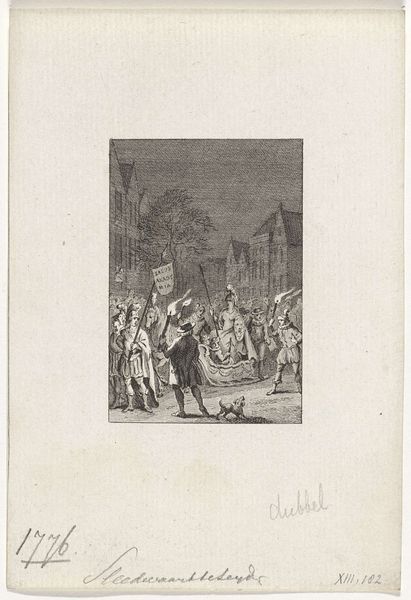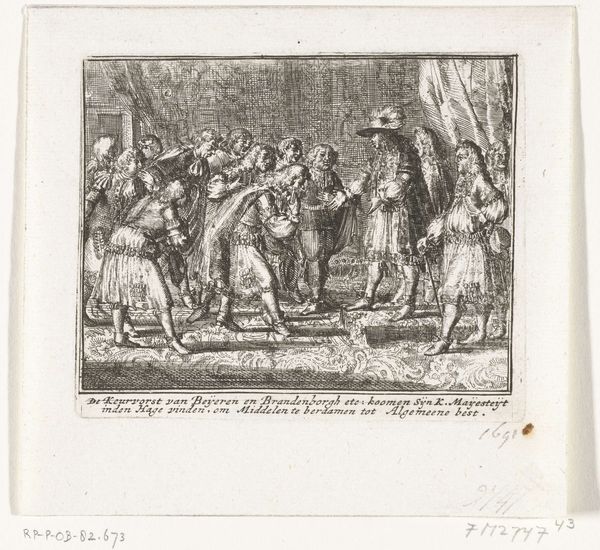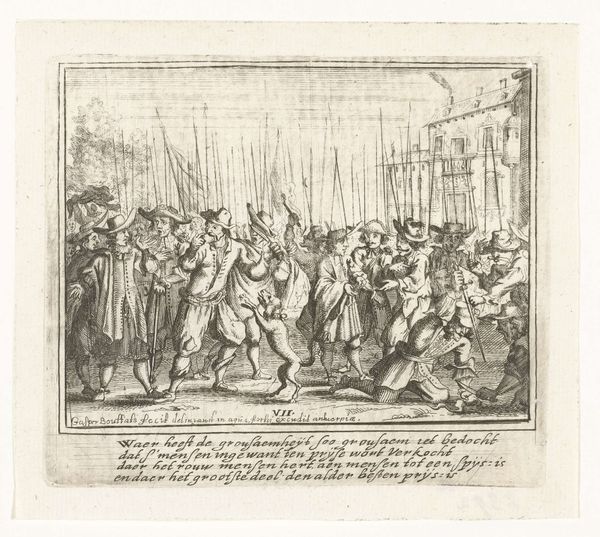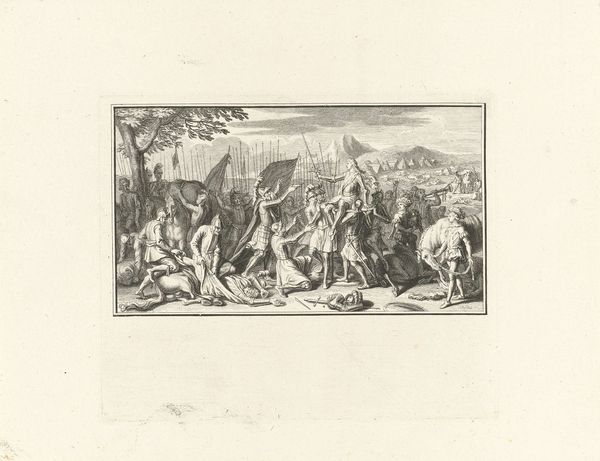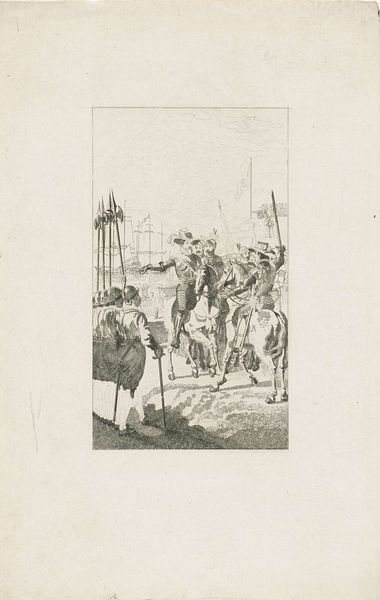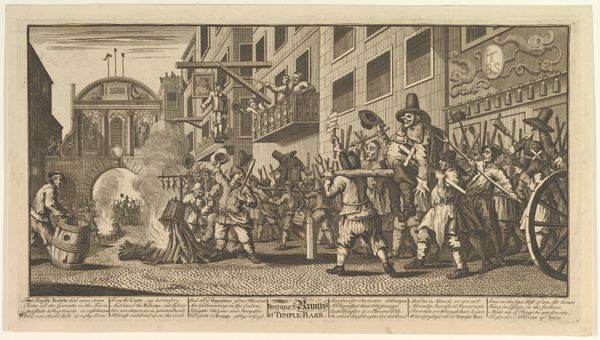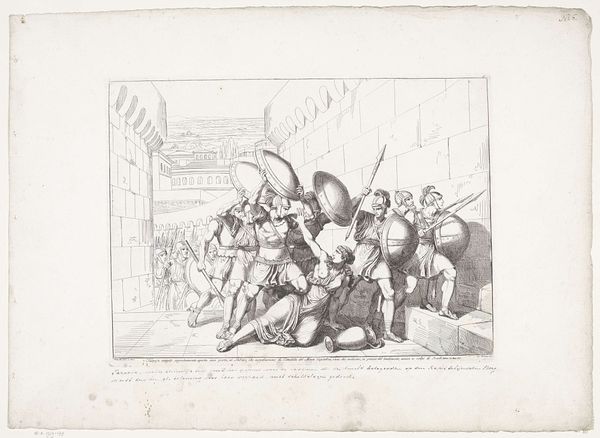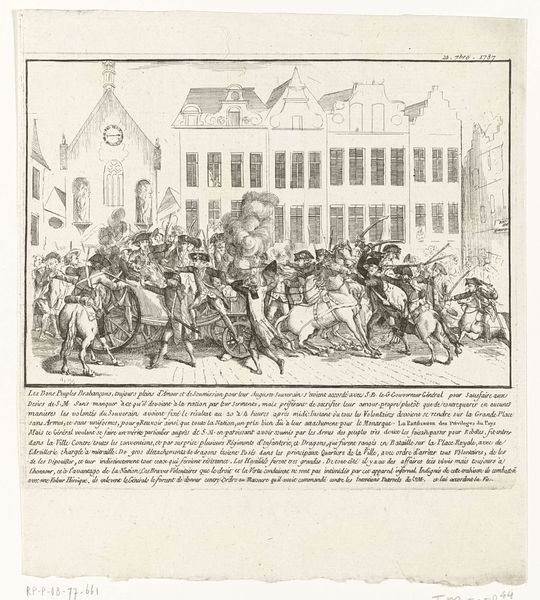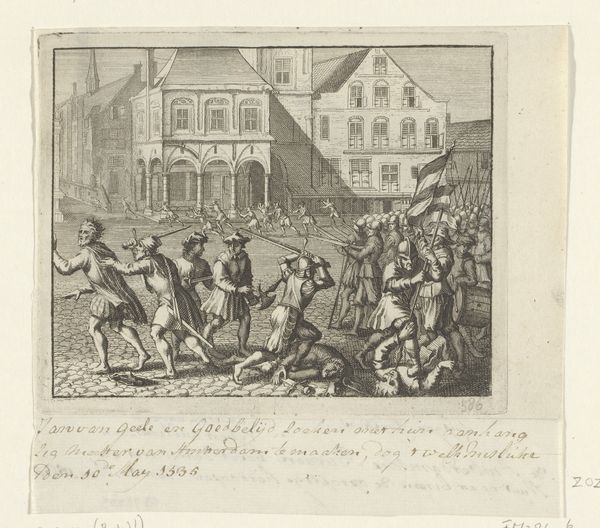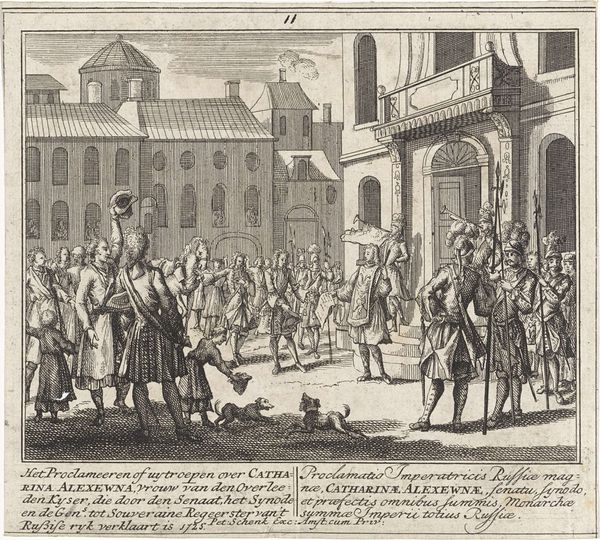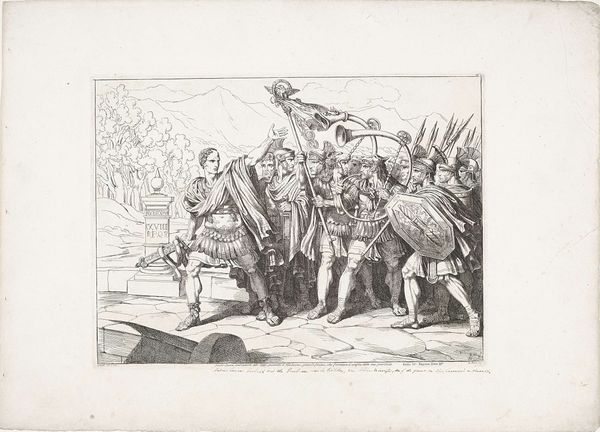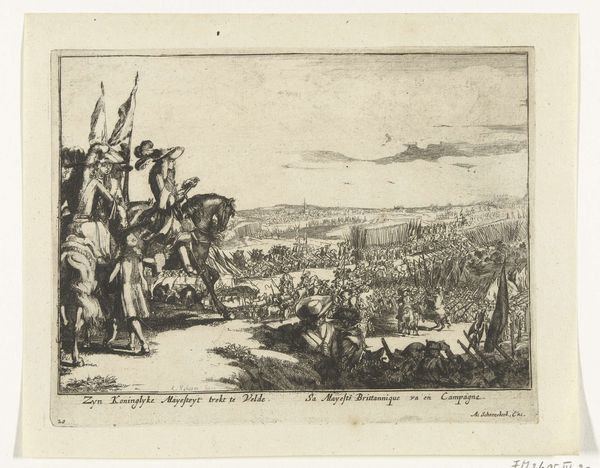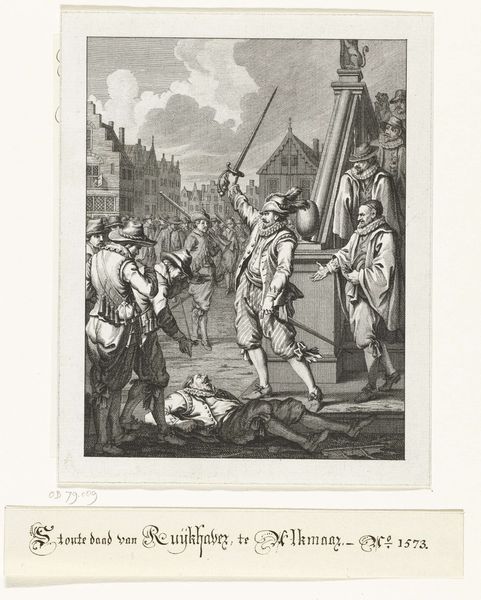
Willem en Maria worden tot koning en koningin van Engeland uitgeroepen, 1689 1711
0:00
0:00
anonymous
Rijksmuseum
print, engraving
#
baroque
# print
#
figuration
#
line
#
cityscape
#
history-painting
#
engraving
Dimensions: height 90 mm, width 110 mm
Copyright: Rijks Museum: Open Domain
Curator: At first glance, the intricacy of line work and the dynamism of the scene are what immediately capture the eye. Editor: Indeed. We are observing an engraving made around 1711. It depicts, as the title tells us, the moment William and Mary were proclaimed King and Queen of England in 1689. The artist is currently listed as anonymous but this piece is held in the esteemed collection of the Rijksmuseum. Curator: Focusing on the composition, note the contrast between the active foreground, filled with figures and animals, and the relatively sparse background with architecture, creating depth through implied perspective. The lines direct your gaze inward, and then upward to suggest limitless grandeur, befitting royalty. Editor: It’s interesting to see how the artist uses the city as a backdrop. This wasn’t just a coronation but a symbolic act taking place within a specific socio-political landscape. This event ratified a Protestant succession which had tremendous ramifications. The open space in the engraving signifies a declaration meant for public consumption. Curator: Certainly. The starkness of the buildings almost serve as a visual anchor, reinforcing the gravity of this event as filtered and composed by this anonymous artist. This choice gives the procession monumental presence, almost theatrical, drawing from Baroque sensibilities. What do you make of the depiction of the people and horses? Editor: They’re idealized. Consider how this image might function as a form of propaganda solidifying support of their reign or shaping their legacy post reign. Also consider the perspective of viewers at the time this engraving would have been distributed. How were these subjects influenced? Curator: From a structural standpoint, the image's success hinges on this contrast between dynamism and stillness. The lines vary in weight to suggest light, form, and hierarchy within the overall pattern. Editor: Absolutely. Ultimately this print reveals that depictions of state events, even ostensibly simple ones, can provide access points into political maneuverings, propagandist agendas, and the shaping of perception. It reminds us that what seems like simple illustration often possesses complex layered meaning when viewed through history. Curator: An examination of this image opens avenues into the interplay between form, material, and meaning, thus broadening our perspective regarding the relationship between ruler and ruled in visual media.
Comments
No comments
Be the first to comment and join the conversation on the ultimate creative platform.
